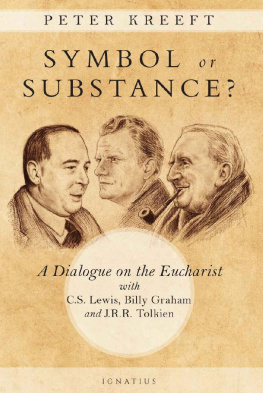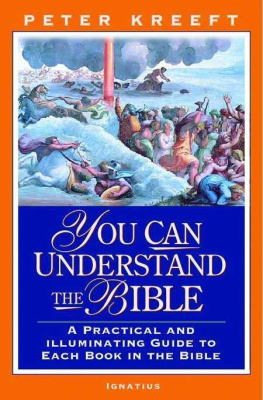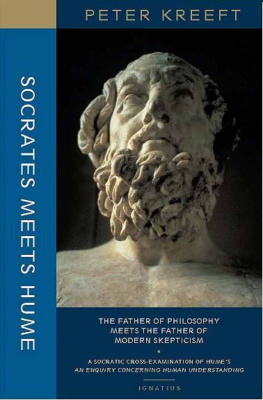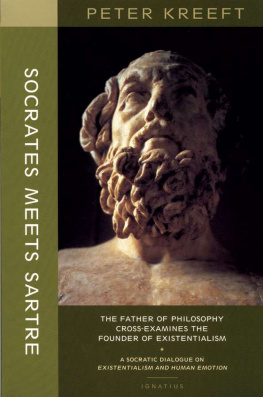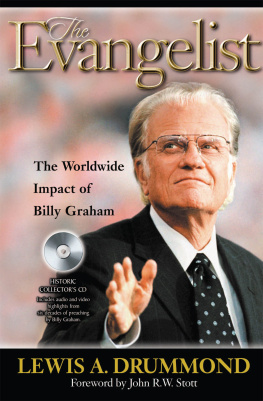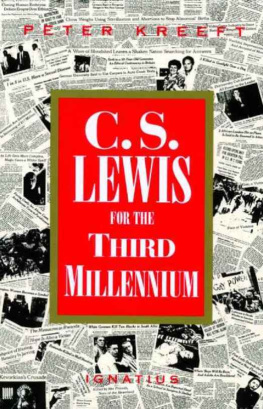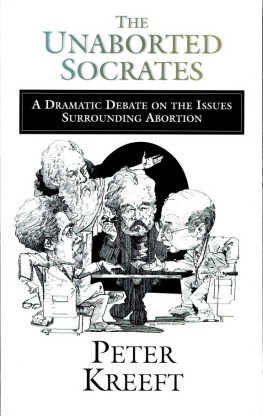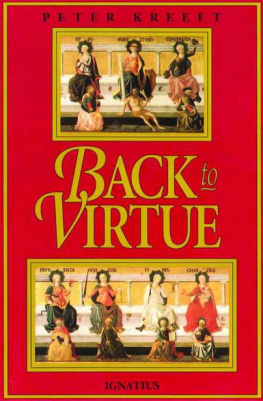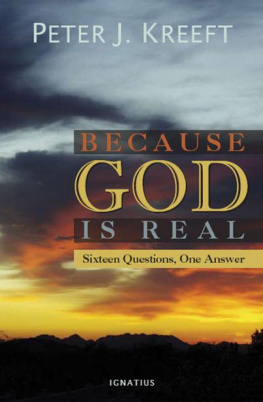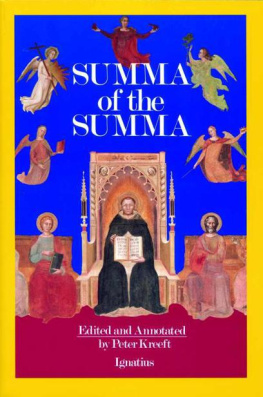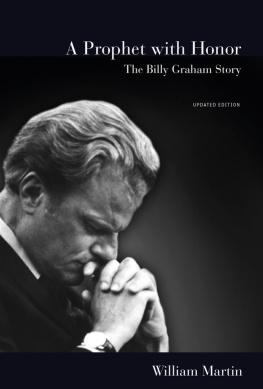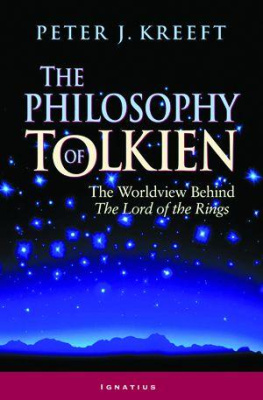Peter Kreeft - Symbol or substance? : a dialogue on the Eucharist with C. S. Lewis, J. R. R. Tolkien, and Billy Graham
Here you can read online Peter Kreeft - Symbol or substance? : a dialogue on the Eucharist with C. S. Lewis, J. R. R. Tolkien, and Billy Graham full text of the book (entire story) in english for free. Download pdf and epub, get meaning, cover and reviews about this ebook. year: 2019, genre: Religion. Description of the work, (preface) as well as reviews are available. Best literature library LitArk.com created for fans of good reading and offers a wide selection of genres:
Romance novel
Science fiction
Adventure
Detective
Science
History
Home and family
Prose
Art
Politics
Computer
Non-fiction
Religion
Business
Children
Humor
Choose a favorite category and find really read worthwhile books. Enjoy immersion in the world of imagination, feel the emotions of the characters or learn something new for yourself, make an fascinating discovery.
- Book:Symbol or substance? : a dialogue on the Eucharist with C. S. Lewis, J. R. R. Tolkien, and Billy Graham
- Author:
- Genre:
- Year:2019
- Rating:3 / 5
- Favourites:Add to favourites
- Your mark:
- 60
- 1
- 2
- 3
- 4
- 5
Symbol or substance? : a dialogue on the Eucharist with C. S. Lewis, J. R. R. Tolkien, and Billy Graham: summary, description and annotation
We offer to read an annotation, description, summary or preface (depends on what the author of the book "Symbol or substance? : a dialogue on the Eucharist with C. S. Lewis, J. R. R. Tolkien, and Billy Graham" wrote himself). If you haven't found the necessary information about the book — write in the comments, we will try to find it.
Peter Kreeft: author's other books
Who wrote Symbol or substance? : a dialogue on the Eucharist with C. S. Lewis, J. R. R. Tolkien, and Billy Graham? Find out the surname, the name of the author of the book and a list of all author's works by series.
Symbol or substance? : a dialogue on the Eucharist with C. S. Lewis, J. R. R. Tolkien, and Billy Graham — read online for free the complete book (whole text) full work
Below is the text of the book, divided by pages. System saving the place of the last page read, allows you to conveniently read the book "Symbol or substance? : a dialogue on the Eucharist with C. S. Lewis, J. R. R. Tolkien, and Billy Graham" online for free, without having to search again every time where you left off. Put a bookmark, and you can go to the page where you finished reading at any time.
Font size:
Interval:
Bookmark:
Symbol or Substance?
PETER KREEFT
_________________
A Dialogue on
the Eucharist with
C. S. Lewis,
J. R. R. Tolkien,
and Billy Graham
IGNATIUS PRESS SAN FRANCISCO
Cover art and design by Enrique J. Aguilar
2019 Ignatius Press, San Francisco
All rights reserved
ISBN 978-1-64229-063-9 (EB)
ISBN 978-1-62164-275-6 (PB)
Library of Congress Control Number 2018949824
Printed in the United States of America
The following conversation is fictional. It never happened, at least not in this world.
However, it very well could have. The idea of such a three-part conversation is not too far-fetched because two other conversations, which were the germs of my fictional one, actually did happen in this world.
(1) According to some sources, Lewis had a conversation with two people from the Billy Graham Evangelistic Association sent by Graham to Lewis to feel him outan interview that sounds a little like the conversation between Jesus and the two messengers John the Baptist sent to Him when he was in prison (see Lk 7:19).
According to other sources, the visit was not from the Graham team but from Bob Jones, Jr., of Bob Jones University. I have assumed the first source rather than the second in this book, to make the conversation more intelligent, polite, and open-minded.
(2) Lewis also had very many conversations with his closest Roman Catholic friend, J. R. R. Tolkien; and at first some of these conversations were about their only serious difference of opinion, which was about Catholicism. Lewis had converted to Christianity with Tolkiens help, and Tolkien pressed him to take the next step, from Anglicanism to Catholicism. Lewis was a man who loved controversy and argument as a bear loves honey; but he very uncharacteristically asked Tolkien to cease and desist from that one conversation topic for the sake of their continuing friendship, according to Christopher Derrick and Joseph Pearce, both of whom wrote books on why Lewis never poped. Both report Lewis as saying to Tolkien something like: You could not possibly understand where I am coming from; you were not born in Belfast.
So the literary genre of this book is neither simply fiction nor simply nonfiction. It is what C. S. Lewis called a supposal when pointing out that his Narnia books were neither allegories nor simple fantasies but imaginative answers to the question of what forms he supposes the Son of God might have taken and what actions He might have performed if He had become not only a man on earth but also a lion in another world (Narnia), a world of talking animals. Aslan is not an allegory for Jesus; Aslan is Jesus; thats what Lewis said to children who wrote to him that they were worried that they loved Aslan more than they loved Jesus.
Just as Aslan in Narnia is based on the historical figure of Jesus in this world, so my characters in this book (Lewis, Tolkien, and Billy Graham) are based on those three historical figures in this world. The difference between my supposal in this book and Lewis in the Narnia books (besides the obvious one that the Chronicles of Narnia is a masterpiece) is that Lewis set his fiction in a world that was also fictionalhe had the imagination to invent a whole fictional worldwhile I set mine in the real world, in Tolkiens home in Oxford.
I once wrote another imaginative supposal like this one, also in the form of a trialogue, a conversation among three famous people. In Between Heaven and Hell, I supposed that the three historical figures of C. S. Lewis, John F. Kennedy, and Aldous Huxley, all of whom died on the same afternoon of November 22, 1963, had a conversation about the meaning of life in general and the identity of Jesus in particular when they met in the next world after their nearly simultaneous deathsa world that is neither fictional (like Narnia) nor historical (like Oxford). It worked. It has been in print for thirty-five years and has sold over 100,000 copies. Like the conversation in this book, it could have happened.
I love to imagine three-way conversations among famous people. Another, shorter conversation I wrote was one with Lewis, Martin Luther, and Saint Thomas Aquinas. (That was part of Ecumenical Jihad.) Still another one was a series of dialogues among an Exclusivist, an Inclusivist, and a Pluralist at Harvard on the relations between the different religions of the world (Between One Faith and Another).
So in this book I picked three of the most famous, loved, and respected representatives of each of the three main Christian theological traditions or churches in the English-speaking world: the most famous modern Protestant evangelist (Billy Graham), the most famous modern Anglican Christian writer (C. S. Lewis), and the most famous and popular modern Roman Catholic writer (Tolkien), whose The Lord of the Rings was picked by three reader polls as the greatest book of the twentieth century and by another one as the greatest book of the millennium. Tolkien was not a religious apologist, preacher, or theologian, but he called The Lord of the Rings a fundamentally Catholic and religious work.
I had the conversation move into many important issues, as conversations naturally do, including some of the classic differences between Protestants and Catholics (faith and works, Bible and Church,tradition, authority, the pope). I had these three conversationalists,however, concentrate on the Eucharist, especially the Real Presence of Christ in it, because broadening the conversation further to try to do even a little justice to those other big issues would have required a book six times longerand also because the Eucharist was the most passionate issue in the great divide of the Reformation, both between Catholics and Protestants and even among different Protestants. And naturally so, since the issue was nothing less than whether Roman Catholics and high Anglicans or Anglo-Catholics were committing idolatry in bowing to bread and worshipping wine, adoring a symbol that they mistook for the God it symbolized; or whether Protestants were rejecting Gods greatest gift, the most perfect, most intimate, most powerful, and most complete union with their Lord that was possible in this life, and reducing the substance, the real thing, to a mere symbol and/or a subjective experience. Anglicans took a via media position on this, as on most issues, objecting to Romes authority and insistence on Transubstantiation but affirming the Real Presence.
This is a great oversimplification, since during the Reformation there emerged a spectrum of quite a few different positions both among Protestants and among Anglicans, and there still are today. In fact, on this issue the difference between Anglicans and Baptists is far greater than the difference between Anglicans and Catholics.
A second reason why I focused on the Eucharist is that for me as a Roman Catholic the Eucharist is what it cannot be for a Protestant, viz., the source, summit, sum, and substance of my Christian life. But I also profoundly admire the faith, sanctity, sincerity, and personal passion of Billy Graham and also the mind of C. S. Lewis, who is clearly, in my opinion, the most brilliant and effective Christian writer of the last century.
Dearly would I love to have been a fly on the wall hearing a conversation among these three. But the only way I can hear it is to invent it first. I write the books that I wish someone else would write, but they dont, so I have to. If Im to read them, I have to write them first. The same holds true for conversations.
I invite readers to be fellow flies on the wall listening to these three great Christians discuss one great mystery. (Of course, we would have to be invisible flies; if the three of them ever saw all of us on their wall,
Next pageFont size:
Interval:
Bookmark:
Similar books «Symbol or substance? : a dialogue on the Eucharist with C. S. Lewis, J. R. R. Tolkien, and Billy Graham»
Look at similar books to Symbol or substance? : a dialogue on the Eucharist with C. S. Lewis, J. R. R. Tolkien, and Billy Graham. We have selected literature similar in name and meaning in the hope of providing readers with more options to find new, interesting, not yet read works.
Discussion, reviews of the book Symbol or substance? : a dialogue on the Eucharist with C. S. Lewis, J. R. R. Tolkien, and Billy Graham and just readers' own opinions. Leave your comments, write what you think about the work, its meaning or the main characters. Specify what exactly you liked and what you didn't like, and why you think so.

